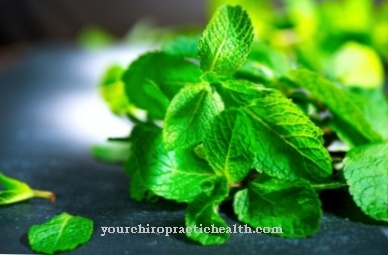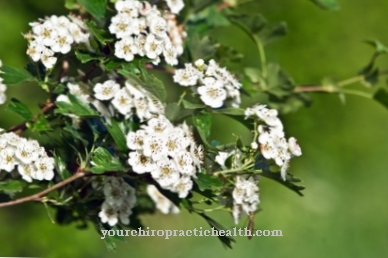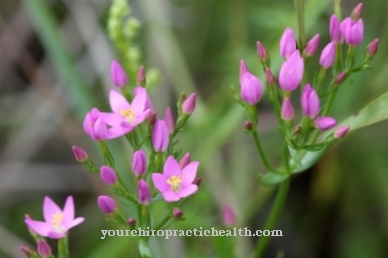Occurrence & cultivation of the Asant

Of the Asant is a perennial plant that can grow up to three meters high. The herbaceous perennial plant has bi-pinnate leaves that sit on a thick stem. The plant forms a strong taproot. The leaflets are downy hairy and, in contrast to the deciduous leaves, are not pinnate, but elongated and obtuse with a smooth edge. The double-gold inflorescence of the asant is also dense and hairy. The petals of the plant are whitish-yellow.
The asante forms fruits one centimeter long and 0.8 centimeter wide. The shape varies from oblong to spherical. The plant was named Stinkasant because of the sap that can be found in leaves, stems and roots. The smell of the asanthine is a bit reminiscent of fresh garlic. The asant was first mentioned in botanical terms in 1753 in Carl von Linnés Species Plantarum. The plant is common in Iran, Afghanistan, Russia and Pakistan.
Effect & application
The resin of the asant is used medicinally and as a spice. In order to get to the resin, the roughly 15 centimeter thick rhizome is cut. Milky juice comes out. This one smells and tastes like garlic. The milky juice is now dried in the sun and becomes resinous. It changes its color from white to red-brown. The exposure of the roots and the extraction of the milk juice take place over a period of two to three months. One kilogram of resin can be extracted from one plant.
The medicinally used asanth drug consists of 25 to 66 percent resin. The main ingredients of the resin are the ferulic acid esters of adaresinotannol, free asaresinotannol, ferulic acid, sesquiterpenes and umbelliferones. 20 to 30 percent of the asanth drug consists of gum with the components galactose, glucuronic acid and rhamnose. The rest consists of essential oils. Here, in particular, the asante oil, which is responsible for the garlic-like smell and taste of the asante.
The asant shows its main effect in nervous disorders of the digestive organs. Flatulence, stomach cramps, gastric mucosal inflammation and indigestion are indications for a treatment with asanth. Due to its calming effect, Asant is also suitable for the therapy of hysterical and hypochondriac symptoms, nervous heart diseases, fainting or even claustrophobia. In some cases it has also been reported to be effective in treating menopausal insomnia.
In particular, the essential oil of asant has anti-inflammatory, antibacterial and antiviral effects. As a result, Asant is also suitable for treating inflammation. Asant is used in naturopathy, in particular for inflammation of glands or bones. The plant can be used for tooth decay, inflammation of the bones, inflammation of the eyes, inflammation of the gums and also stomach and intestinal ulcers.
Asant has also proven its worth as a support for cancer treatments and menopausal symptoms. In Ayurveda, asant, also called asafoetida, is also known as a strong digestive agent and is often used as a spice in combination with ginger, cardamom and rock salt. Asant is said to make dishes, especially lentil and bean dishes, easier to digest. In addition, Asant is considered the most effective means to stimulate and kindle the digestive fire (Agni).
In Ayurveda, a digestive drink is also served a quarter of an hour before a meal. This consists of a glass of water, a pinch of asante, some rock salt and a small piece of fresh and finely grated ginger. In homeopathy, Asant is used for stomach and intestinal complaints and for migraines. People who need a homeopathic dose of Asafoetida are typically more nervous, hypochondriac and over-sensitive to all touch, according to Mittelbild.
They often suffer from nasal and eye problems with foul-smelling secretions. In addition, they often describe the feeling that they should burst or have a lump in their throat. In homeopathy, Asant is usually used in potencies between D4 and D12.
Importance for health, treatment & prevention
Gerhard Madaus, a well-known German physician, found that Asant is mentioned more frequently in Sanskrit scriptures under the name Hingu. Hingu or Asant was used as a remedy for millennia. As early as the 1st century, Dioscurides used asant to replace silphium, an extinct medicinal plant.At that time, sylphium was considered a panacea and was used for all diseases.
At that time the Asant was said to have a similar all-encompassing effect. Paracelsus already appreciated the antibacterial and disinfecting effect of the asant back then and used the resin primarily to smoke out pest houses. Lonicerus and Matthiolus, two doctors and botanists from the Middle Ages, used Asant to treat epilepsy, asthma, cough and fever. At the beginning of the 19th century, the asant was increasingly used in the treatment of diseases of the digestive organs.
The well-known doctor Hufeland gave the asant an anticonvulsant effect and used it for tapeworms and also for bone damage. The doctor Clarus clearly saw the Asant as a means of treating diseases of the gastrointestinal tract and referred to the relaxing and gas-reducing effects of the plant. Today the asante no longer plays a role in conventional medicine. As important as it was in traditional European medicine, the asant is still rarely used today. Only in Ayurveda medicine and homeopathy is Asant still a popular remedy today.


.jpg)

























